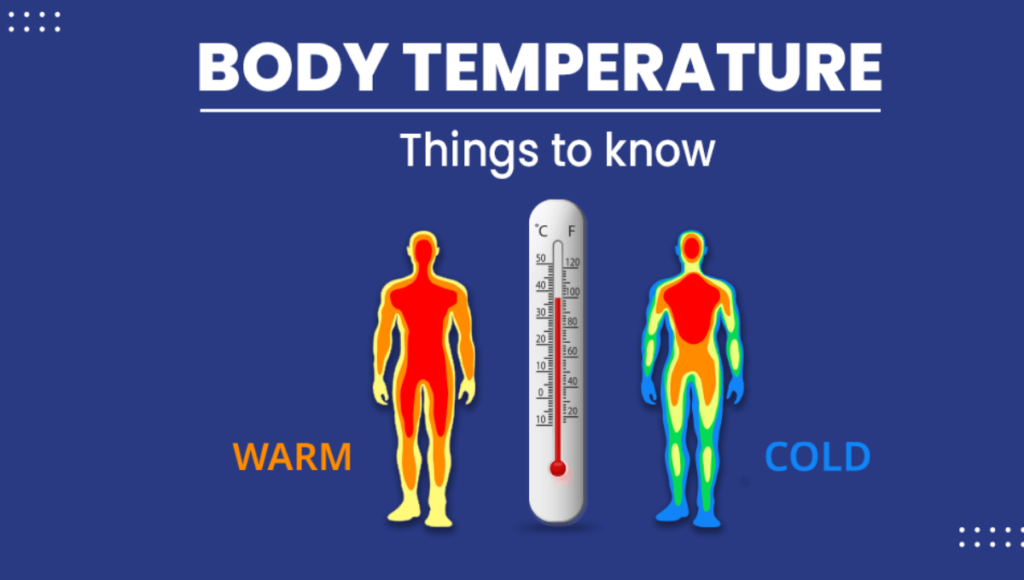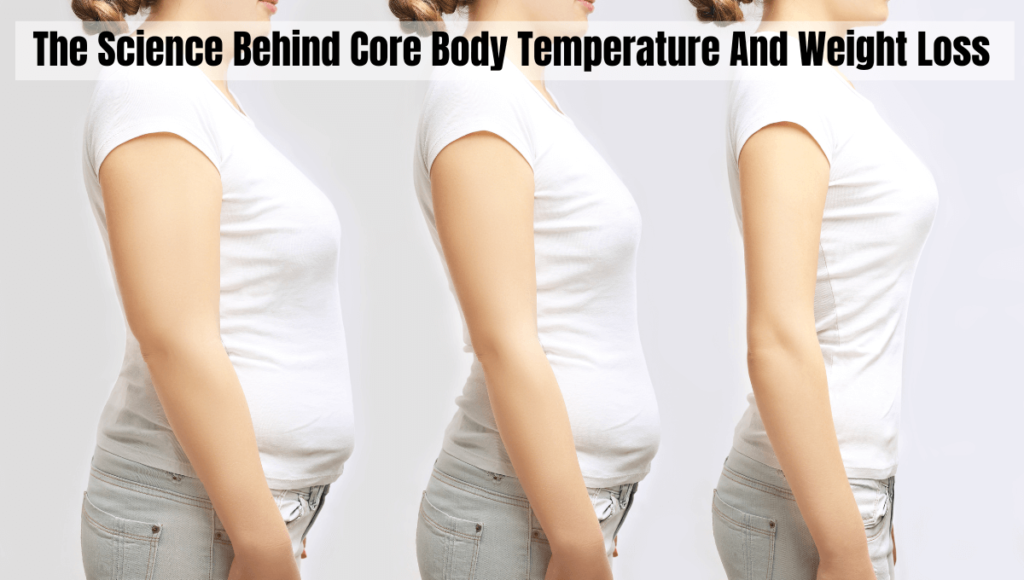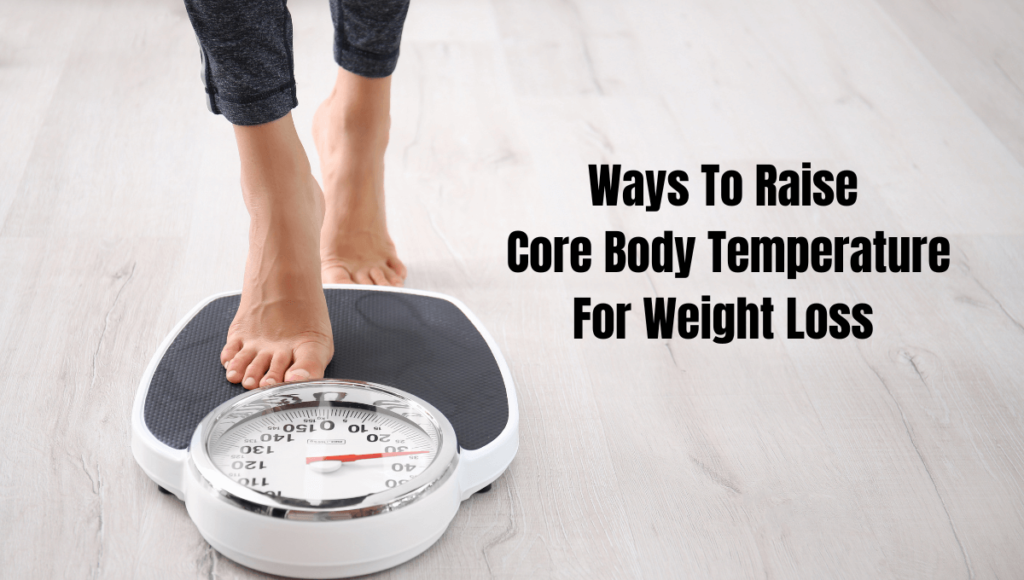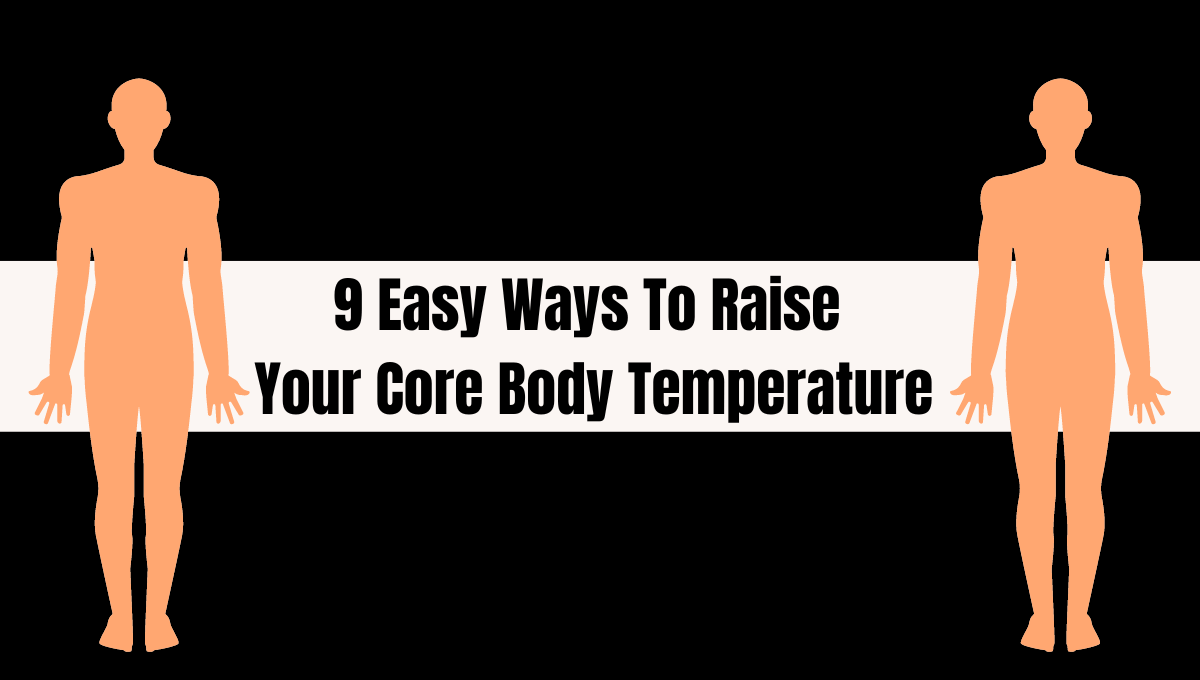| Contents: 1. What Is Core Body Temperature? 1.1 The Science Behind Core Body Temperature And Weight Loss 1.2 Causes For Lower Body Temperature Of The Body 2. 9 Easy Ways Raise Your Core Body Temperature for Weight Loss 3. Conclusion 4. FAQs |
What Is Core Body Temperature?
Core body temperature refers to the internal temperature of an organism, typically in reference to humans and other warm-blooded animals. It is the temperature of the body’s deep tissues and organs, including the brain, heart, liver, and other vital organs. In humans, the normal core body temperature is approximately 98.6 degrees Fahrenheit (37 degrees Celsius), although there can be slight variations throughout the day.
For effective weight loss, there are countless diets, exercise routines, and supplements available on the market. However, one often overlooked aspect of weight management is the role of core body temperature. Emerging research suggests that raising your core body temperature can have a significant impact on weight loss. Here, in this discussion we will find out “9 easy ways to raise your core body temperature for weight loss”.

The Science Behind Core Body Temperature And Weight Loss:

Before we dive into the strategies to raise your core body temperature, let’s first understand the science behind this concept and why it matters for weight loss.
Basal Metabolic Rate (BMR):
Your body requires a certain amount of energy, or calories, to maintain basic functions while at rest. This is known as your Basal Metabolic Rate (BMR). BMR is influenced by various factors, including age, gender, genetics, and body composition. Research has shown that individuals with higher BMRs tend to burn more calories at rest, making it easier for them to maintain or lose weight.
Thermogenesis:
Thermogenesis is the process by which your body generates heat. One key contributor to thermogenesis is the activation of brown adipose tissue (BAT), often referred to as “brown fat.” Unlike white fat, which stores energy, brown fat burns calories to generate heat. Therefore, increasing the activity of brown fat can lead to higher calorie expenditure and, ultimately, weight loss.
Exercise-Induced Thermogenesis:
When you engage in physical activity, your body naturally raises its core temperature. This is a result of increased energy expenditure during exercise. Activities that elevate your heart rate and induce sweating, such as cardiovascular exercises and strength training, can significantly contribute to calorie burning and weight loss.
Diet-Induced Thermogenesis:
Certain foods can also influence your core body temperature. For instance, spicy foods, such as chili peppers, contain capsaicin, a compound that can temporarily increase your body temperature and boost metabolism. Additionally, consuming protein-rich foods requires more energy for digestion and absorption, which can lead to a slight increase in thermogenesis.
Causes For Lower Body Temperature Of The Body:
The typical internal heat level is 98.6°F (37°C). However, you ought to know that “typical center internal heat level” differs somewhat from one individual to another. It’s anything but a particular number but instead a scope of thought process to be solid. Any temperature from 97°F (36.1°C) and 99°F (37.2°C) can be viewed as ordinary. Lower body temperature, also known as hypothermia, occurs when the body loses heat more quickly than it can produce it or when the body’s temperature-regulating mechanisms become impaired. There are several causes of lower body temperature, which can range from mild to severe. Here are some common causes:
- Exposure to Cold Weather: Prolonged exposure to cold temperatures without adequate protection, such as warm clothing or shelter, can lead to hypothermia. Wind, rain, and wet clothing can exacerbate heat loss.
- Submersion in Cold Water: Immersion in cold water, such as swimming in frigid water or falling into icy water, can rapidly lower the body’s temperature. Water conducts heat away from the body much faster than air.
- Inadequate Clothing: Wearing insufficient clothing in cold conditions or wearing damp clothing can increase the risk of hypothermia. Layers of clothing, including insulating materials, help retain body heat.
- Prolonged Exposure to Cold Indoor Environments: Staying in a cold indoor environment for an extended period without proper heating or insulation can also lead to lowered body temperature.
- Reduced Physical Activity: Physical inactivity or immobilization for an extended period, such as during bed rest or inactivity due to an illness or injury, can cause a drop in body temperature.
- Malnutrition: A lack of proper nutrition, especially insufficient intake of calories and essential nutrients, can impair the body’s ability to generate heat and maintain a normal body temperature.
- Dehydration: Dehydration can interfere with the body’s ability to regulate temperature because water is essential for many physiological processes, including heat regulation.
- Medical Conditions: Certain medical conditions can lead to lower body temperature, including hypothyroidism (an underactive thyroid gland), diabetes, and neurological disorders that affect temperature regulation.
- Medications and Drugs: Some medications and recreational drugs can affect the body’s ability to regulate temperature. For example, alcohol and certain sedatives can impair thermoregulation.
- Age: Infants, older adults, and individuals with compromised immune systems are more susceptible to hypothermia because their bodies may have difficulty regulating temperature.
- Chronic Illness: Chronic illnesses, such as cardiovascular disease and respiratory conditions, can weaken the body and make it more vulnerable to temperature fluctuations.
- Trauma or Shock: Severe trauma, such as blood loss or shock, can lead to a drop in body temperature as the body redirects blood flow away from the skin’s surface to protect vital organs.
9 Easy Ways Raise Your Core Body Temperature For Weight Loss:

Now that we have established the importance of core body temperature in the weight loss process, let’s explore practical strategies to help you increase it.
- Incorporate Regular Exercise:
One of the most effective ways to raise your core body temperature and boost metabolism is through regular exercise. Engage in a combination of aerobic exercises (e.g., running, swimming, cycling) and resistance training (e.g., weightlifting, bodyweight exercises) to maximize calorie expenditure and muscle development. Aerobic exercises elevate your heart rate and increase body temperature during the workout, while resistance training builds lean muscle mass. Muscle tissue burns more calories at rest than fat tissue, which means that increasing your muscle mass can lead to a higher BMR and more efficient weight management.
- Explore High-Intensity Interval Training (HIIT):
HIIT is a time-efficient exercise strategy that involves short bursts of intense activity followed by brief rest periods. This approach not only elevates your core body temperature but also triggers the “afterburn effect” or excess post-exercise oxygen consumption (EPOC). EPOC leads to an elevated metabolism even after your workout, helping you burn more calories throughout the day.
- Embrace Cold Exposure:
While raising your core body temperature is important, occasional exposure to cold can also have benefits for weight loss. Cold exposure, such as taking cold showers or ice baths, stimulates the activation of brown adipose tissue (BAT). As mentioned earlier, BAT burns calories to generate heat, potentially aiding in weight management. Additionally, cold exposure can improve insulin sensitivity and increase the utilization of brown fat, both of which are associated with better metabolic health.
- Consume Thermogenic Foods:
Incorporate thermogenic foods into your diet to naturally raise your core body temperature and enhance metabolism. Some foods known for their thermogenic properties include:
- Spicy peppers (capsaicin)
- Green tea (catechins)
- Coffee (caffeine)
- Lean proteins (e.g., chicken, turkey, fish)
- Whole grains (complex carbohydrates)
- Ginger
These foods can temporarily boost your metabolism and support your weight loss efforts when consumed as part of a balanced diet.
- Stay Hydrated:
Proper hydration is essential for maintaining optimal metabolic function. Water is involved in many metabolic processes, including the breakdown of stored fat. Drinking enough water throughout the day can help your body function efficiently and may aid in weight loss. Some studies suggest that drinking cold water may increase calorie expenditure, as your body needs to expend energy to warm the water to body temperature. However, this effect is relatively small and should not be relied upon as a primary weight loss strategy.
- Prioritize Sleep:
Adequate and quality sleep is crucial for overall health, including weight management. Poor sleep can disrupt hormonal balance, increasing hunger hormones like ghrelin and reducing satiety hormones like leptin. This can lead to overeating and weight gain. Furthermore, sleep deprivation can lower your core body temperature and reduce your BMR, making it harder to burn calories effectively. Aim for 7-9 hours of restful sleep per night to support your weight loss goals.
- Manage Stress:
Chronic stress can lead to elevated levels of cortisol, a hormone associated with increased fat storage, particularly in the abdominal area. Moreover, stress can affect your sleep quality and appetite regulation, making it more challenging to maintain a healthy weight. Add stress-reduction techniques such as meditation, yoga, deep breathing exercises, and mindfulness practices into your daily routine to help manage stress and promote weight loss.
- Gradual Caloric Deficit:
While raising your core body temperature is important, weight loss ultimately comes down to creating a caloric deficit, where you burn more calories than you consume. It’s crucial to strike a balance between your calorie intake and expenditure. Avoid crash diets or extreme calorie restrictions, as they can slow down your metabolism and lead to muscle loss. Instead, aim for a gradual and sustainable caloric deficit of 250-500 calories per day through a combination of dietary changes and exercise.
- Consider Supplements:
Some dietary supplements claim to boost metabolism and raise core body temperature. However, it’s essential to approach supplements with caution and remember that supplements should complement a balanced diet and regular exercise, not replace them.
One of the best supplements that I know is here, you can check the price.
You May Also Like To Read:
>> The Numerous Benefits Of Liver Health Formula
>> Which Statement Best Describes A Lifestyle With Healthy Eating Habits?
>> 8 Effective Ways To Get “A Lean Belly”
>> 5-Minute Plank Workout : The Ultimate Challenge
Conclusion:
Raising your core body temperature can play a significant role in supporting your weight loss journey. By understanding the science behind it, you can enhance your metabolism and increase your chances of achieving long-term weight loss success. Ultimately, a holistic approach to weight management that incorporates lifestyle changes, healthy eating habits, and regular physical activity will not only help you raise your core body temperature but also promote overall well-being and vitality. Remember that individual results may vary, and it’s essential to have faith in yourself and patience to achieve the goal.
FAQs:
Q1: How can I increase my core temperature?
Ans: Practice in warm, muggy conditions increments center internal heat level and can cause heat capacity in the body.
Q2: Why is my core temp low?
Ans: Internal heat level declines with age because of fat misfortune. A low temperature can likewise be because of the utilization of specific drugs, hormonal and metabolic changes, and normal variances over the course of the day. All things considered, an internal heat level lower than 97.8 degrees F can in some cases be an indication that something’s off-base.
Q3: What temperature helps burn fat?
Ans: Bringing down the temperature: Earthy colored fat actuates at colder temperatures, just before you begin shuddering. A few examinations propose turning down the indoor regulator, cleaning up or an ice shower could enact earthy colored fat to assist your body with delivering more to consume more calories.
Q4: Can low core body temperature cause weight gain?
Ans: Low internal heat level shows a diminished capacity to “burn through effort” and subsequently a lower metabolic rate. This can bring about long haul weight gain of around 4-5 lbs each year. Normalizing your internal heat level can be urgent in further developing your weight reduction endeavors and further developing your energy levels.
Q5: What is the primary source of body heat?
Ans: Heat is created on a cell level by digestion. The basal metabolic rate increments by thyroid chemical, thoughtful excitement, muscle movement, and synthetic action inside cells. At the point when cell digestion is high, there is an enormous interest in ATP.
